Today is Earth Day, which has been running every year since 1970, and is a day dedicated to the protection of the environment. One of the things we are trying to do as a church is to help to re-establish one form of bird life in our locality.
We are very fortunate in that around our church we have lots of animal and bird life. At this time of year the squirrels are very noticeable in the grounds but also so many different types of birds.
As a congregation and working with the Royal Society for the Protection of Birds (RSPB) we hope to help one species of bird re-establish itself in Dunmurry, the Swift. At the end of March, Monika Wojcieszek, Assistant Conservation Officer of the RSPB, introduced us to this project to encourage Swifts to nest on our premise by hosting an information evening in the McCleery Hall. We were joined by representatives from different local churches.
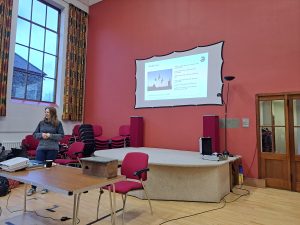
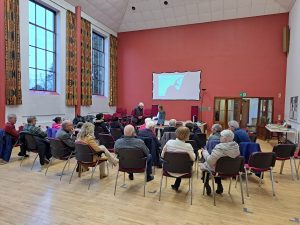
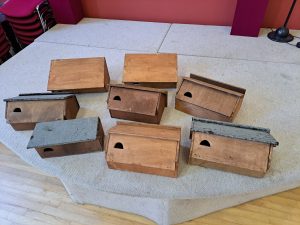
Swifts are described as being medium sized, plain sooty brown in colour with a white throat. And when they are in flight they have long, scythe-like wings with a short forked tail. They weigh about 40g which is actually very little. But they pair for life and every year come back to the same nesting site. This is where we can help them, by putting up nesting boxes. The RSPB provided us with 8 nesting boxes. In April a working group, made up of congregation members, put up the nesting boxes on the wall of the McCleery Hall that runs parallel to the graveyard.
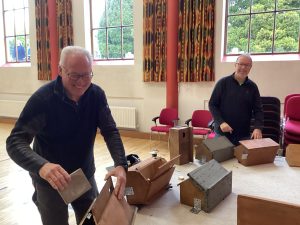

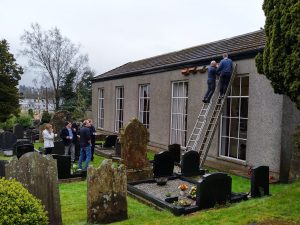
Swifts are migratory birds, they breed all over Europe up as far as the Arctic Circle. Most of the time they live in Africa and they fly back to Europe to breed. They only stay in Northern Ireland for about 100 days, they are among the last migratory birds to arrive and the first to leave. But the time here is crucial because this is where their young are born.
They start to arrive towards the end of April looking for places to nest and stay here until August. Unfortunately human beings have done so much to damage their natural habitat that it is important that we do something to provide them with places to nest which is why we are helping by providing nesting boxes.
Most of these birds live in Central Africa or Mozambique in South East Africa, thousands of miles away. When they fly here they fly across tropical rainforests, across West Africa and across the edge of the Sahara desert and France and Spain. Going back they fly over the mountains of North Africa and the coast of West Africa. So if you see a Swift, here or somewhere else, just think of all the places that bird has seen, all the countries, climates and environments.
They are, in fact, the fastest of all the birds, their top speed has been measured and is known to be 69.3 mph. It’s estimated that they fly 500 miles a day and about 1.24 million miles in their lifetime. They do everything on the wing and only land to nest when they get here. They live a perpetual aerial life and can sleep with half of their brain at a time. They drink by catching rain drops or gliding over smooth water and take sips. They hunt over a wide range of habitats and eat airborne small insects.
Now not many predators can catch a Swift but inevitably human beings have impeded their activities by destroying sites here. So by putting up nesting boxes we will be doing such a favour to these little creatures.
If Swifts do come to nest here each pair will lay about 2-3 eggs and the parents take turns to incubate the eggs. After about three weeks they will hatch and the young birds will be able to fly themselves in between 35-49 days. They would come back to the same place for nesting themselves which is why we needs a number of nesting boxes and why other churches in the locality will try and do the same as us.
We don’t know if Swifts will come here or not and we might have to transmit a bird call to attract them but we won’t know if we don’t try and if we do then we will have done something to help one species and to help bring a rebirth and a renewal for wildlife in our part of Dunmurry.

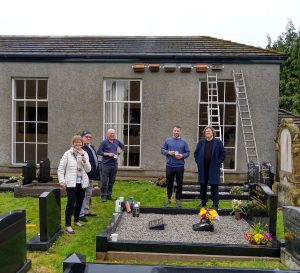
Blog article adapted from Children’s Address provided by Rev Dr David Steers.
Photographs provided by members of our congregation and Rev Dr David Steers.